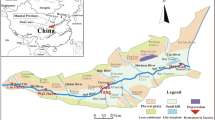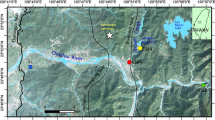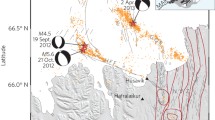Abstract
Significant hydrologic changes were observed after the magnitude 7.3 earthquake that occurred on October 28, 1983, in central Idaho. Groundwater levels rose by as much as 3 meters near the epicenter. Discharge in many streams and springs increased, in some instances by more than 100%. One warm spring ceased flowing for several days; the flow then resumed and peaked at about nine times its original rate. Available data show no significant changes in water quality following the earthquake.
Similar content being viewed by others
References
Crosthwaite, E. G., Thomas, C. A., andDyer, K. L. (1970),Water Resources of the Big Lost River Basin, South-Central Idaho, U.S. Geol. Survey Open-File Report, 109 pp.
Moreland, J. A. (1984), U.S. Geol. Survey, written communication.
Rovetto, R. (1984), Clayton Silver Mine, oral communication.
Swensen, F. A. (1964),Ground-Water Phenomena Associated With the Hebgen Lake Earthquake. InThe Hegben Lake, Montana, Earthquake of August 17, 1959, U.S. Geol. Survey Profess. Paper 435, 159–165.
Wood, S. H. (1984), Boise State Univ., written communication.
Author information
Authors and Affiliations
Rights and permissions
About this article
Cite this article
Whitehead, R.L., Harper, R.W. & Sisco, H.G. Hydrologic changes associated with the October 28, 1983, Idaho earthquake. PAGEOPH 122, 280–293 (1984). https://doi.org/10.1007/BF00874599
Received:
Revised:
Accepted:
Issue Date:
DOI: https://doi.org/10.1007/BF00874599




